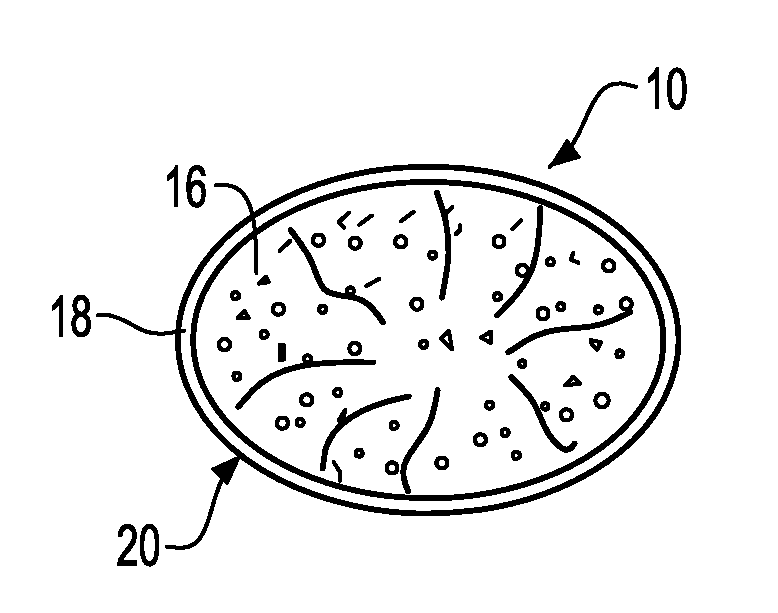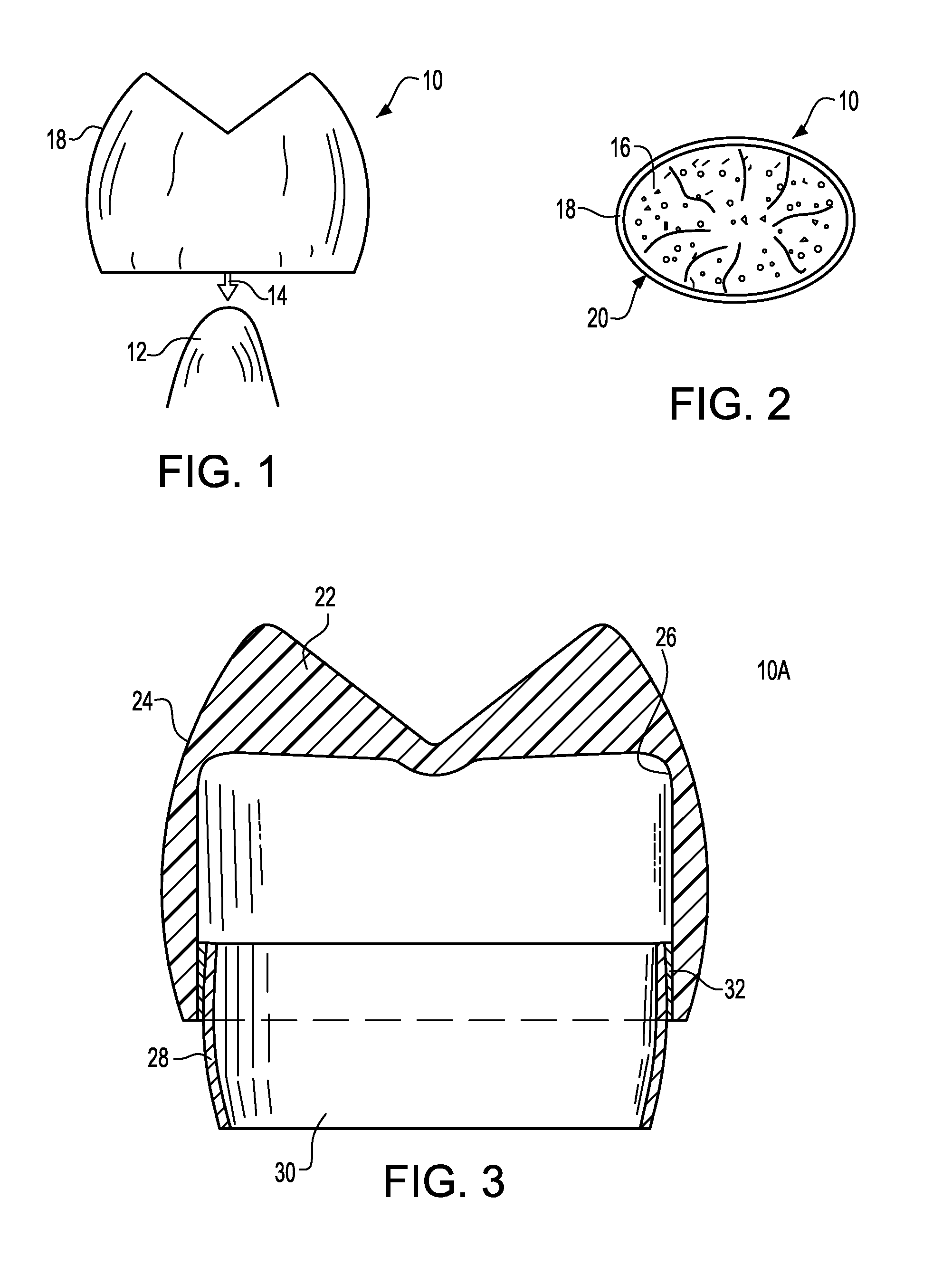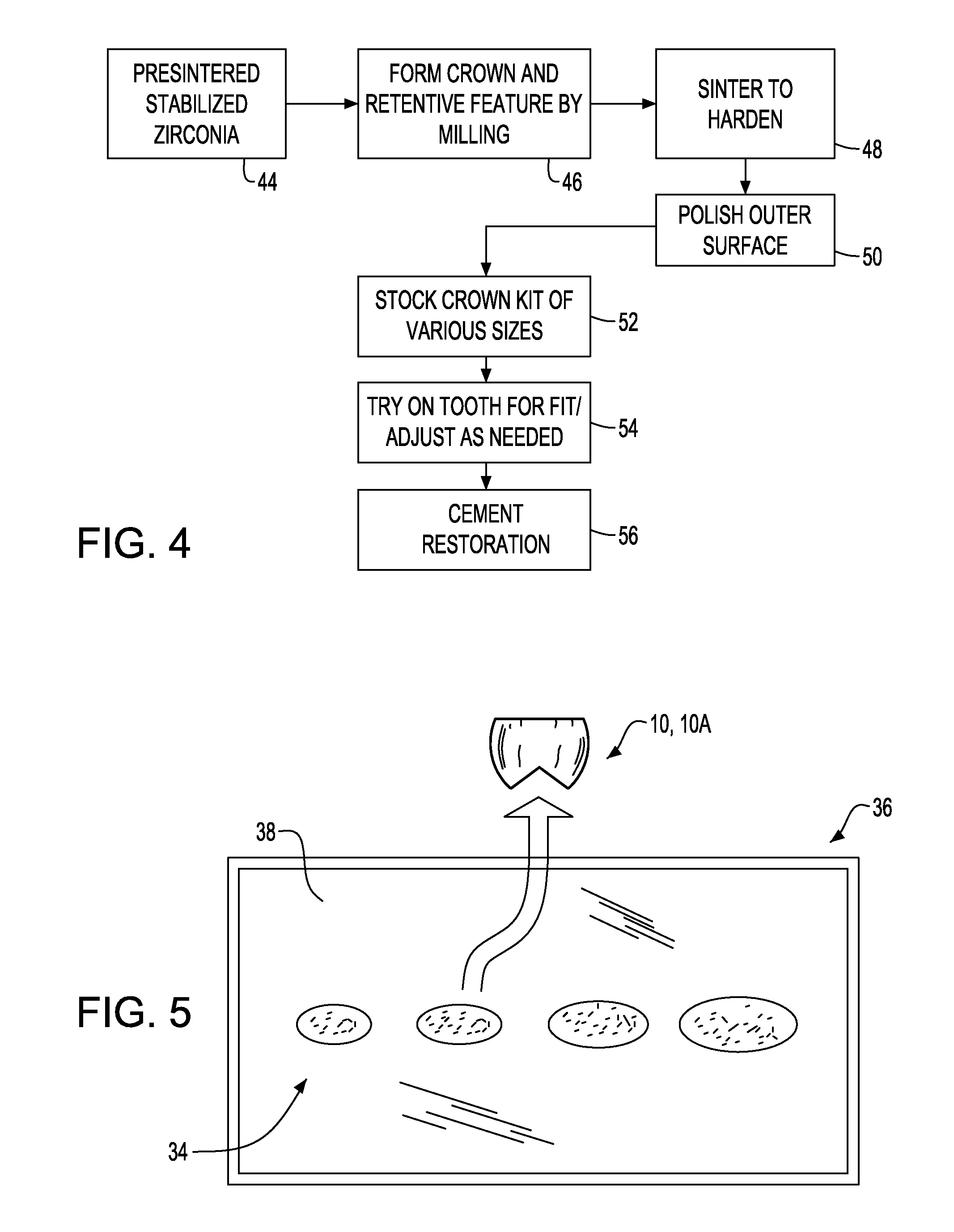Pedodontic/veterinary dental crown system
a dental crown and pedodontic technology, applied in the field of pedodontic/veterinary dental crown systems, can solve the problems of time-consuming and expensive process, difficult to produce, and especially difficult to avoid surgery
- Summary
- Abstract
- Description
- Claims
- Application Information
AI Technical Summary
Benefits of technology
Problems solved by technology
Method used
Image
Examples
example i
[0085]The shape of a natural tooth was designed in CAD. From such design, a hardened zirconia block was milled to produce a crown which mimicked a natural tooth. The zirconia block consisted of pure zirconia stabilized by yttria sold under the designation “ZS-blank” by Kabo Dental Corporation, Lake Zurich, Ill. Following such production of the crown, it was pre-polished by applying a diamond impregnated silicon wheel (CERAGLAZE 1, NTI Axis Dental) to remove all surface irregularities. A final polish was achieved with a Robinson brush / wheel and a 40 millimicron diamond paste. (Frontier Dental Laboratories, El Dorado Hills, Calif.)
example ii
[0086]A crown prepared according to Example I was placed in the mouth of a child patient. A dental practitioner prepared the natural tooth using standard guidelines for primary dentition to allow the patient to receive the pre-fabricated crown of Example I. That is to say, a stub similar to stub 12 of FIG. 1 was created. The prepared zirconia crown was of the proper size having an acceptable mesiodistal width. The fit of the crown was evaluated and possible tissue impingement was determined. Extension of gingival margin was trimmed with a fine diamond wheel on slow speed with a copious water spray. The crown was filled with glass ionomer to cement the same to the natural stub of the tooth. It should be realized that self-cure composite resin cement may have also been used in this regard. The crown was then seated in the mouth completely. Practitioner then checked and adjusted occlusion. Finally, the final polish was applied to the crown using a diamond impregnated silicon wheel.
example iii
[0087]To attain a natural appearance of the crown of Examples I and II, a pre-polish was applied to all external surfaces to remove surface irregularities. A diamond impregnated silicon wheel (CERAGLAZE I, NTI Axis Dental) was employed. After such pre-polish, a final polish was accomplished by using a Robinson brush wheel with 40 ml diamond paste (Frontier Dental Laboratories of Eldorado Hills of Calif.). The finished dental crown appeared to very closely resemble, on an aesthetic basis, the natural tooth of a human.
PUM
 Login to View More
Login to View More Abstract
Description
Claims
Application Information
 Login to View More
Login to View More - R&D
- Intellectual Property
- Life Sciences
- Materials
- Tech Scout
- Unparalleled Data Quality
- Higher Quality Content
- 60% Fewer Hallucinations
Browse by: Latest US Patents, China's latest patents, Technical Efficacy Thesaurus, Application Domain, Technology Topic, Popular Technical Reports.
© 2025 PatSnap. All rights reserved.Legal|Privacy policy|Modern Slavery Act Transparency Statement|Sitemap|About US| Contact US: help@patsnap.com



